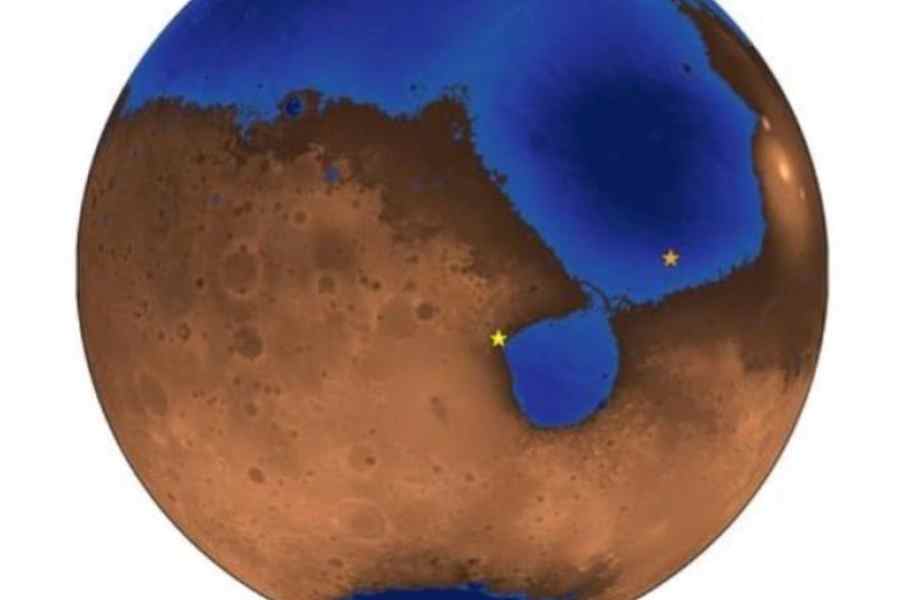A ground-penetrating radar on a Chinese rover that landed on Mars four years ago has helped scientists detect signatures of buried beach deposits, the strongest evidence yet for a giant ocean on Mars aeons ago.
An international research team announced on Monday that the radar observations had revealed deposits similar to beaches on Earth that slope downwards towards oceans and accumulate when sediments are carried by waves into a large body of water.
The sloping subsurface layers in a region called southern Utopia Panitia on Mars and beach deposits along the Bay of Bengal both tilt towards the ocean and display similar structures, the researchers said, reporting their findings in the journal Proceedings of the National Academy of Sciences.
“We found evidence for wind, waves, no shortage of sand — a proper vacation-style beach,” Benjamin Cardenas, a geologist at the Penn State Department of Geosciences, said in a media release.
The data from the radar that probed up to 80 metres beneath the surface show thick layers of material, all pointing up towards what would have been an ancient shoreline at a 15-degree angle, nearly identical to the angle of some beach deposits on Earth.
Images from the Viking spacecraft in the 1970s had first led to speculation that an ocean once existed on Mars. But the hypothesis has been controversial, challenged by irregular ups and downs on the proposed shoreline. Nor had scientists any explanation for what had happened to the ocean. The polar ice caps on Mars do not contain enough water to fill an ocean.
But the radar reflections from China’s Zhurong rover that operated between May 2021 and May 2022 reveal classic signatures of sloping sandy beaches lining an ocean.
The sand on the beaches came from rivers and was transported by currents in the ocean and moved up and down the beaches by the waves coming and going up the beach, said team member Michael Manga, a planetary scientist at the University of California, Berkeley.
The findings strengthen “the case for past habitability in this region of Mars”, said Hai Lui, a key member of the science team of the Tianwen-1 mission that had placed Zhurong on Mars.
The thickness of the buried deposits suggests that Mars had a long-lived body of water made possible by what scientists call a “life-friendly warm and wet period that lasted millions of years”.










